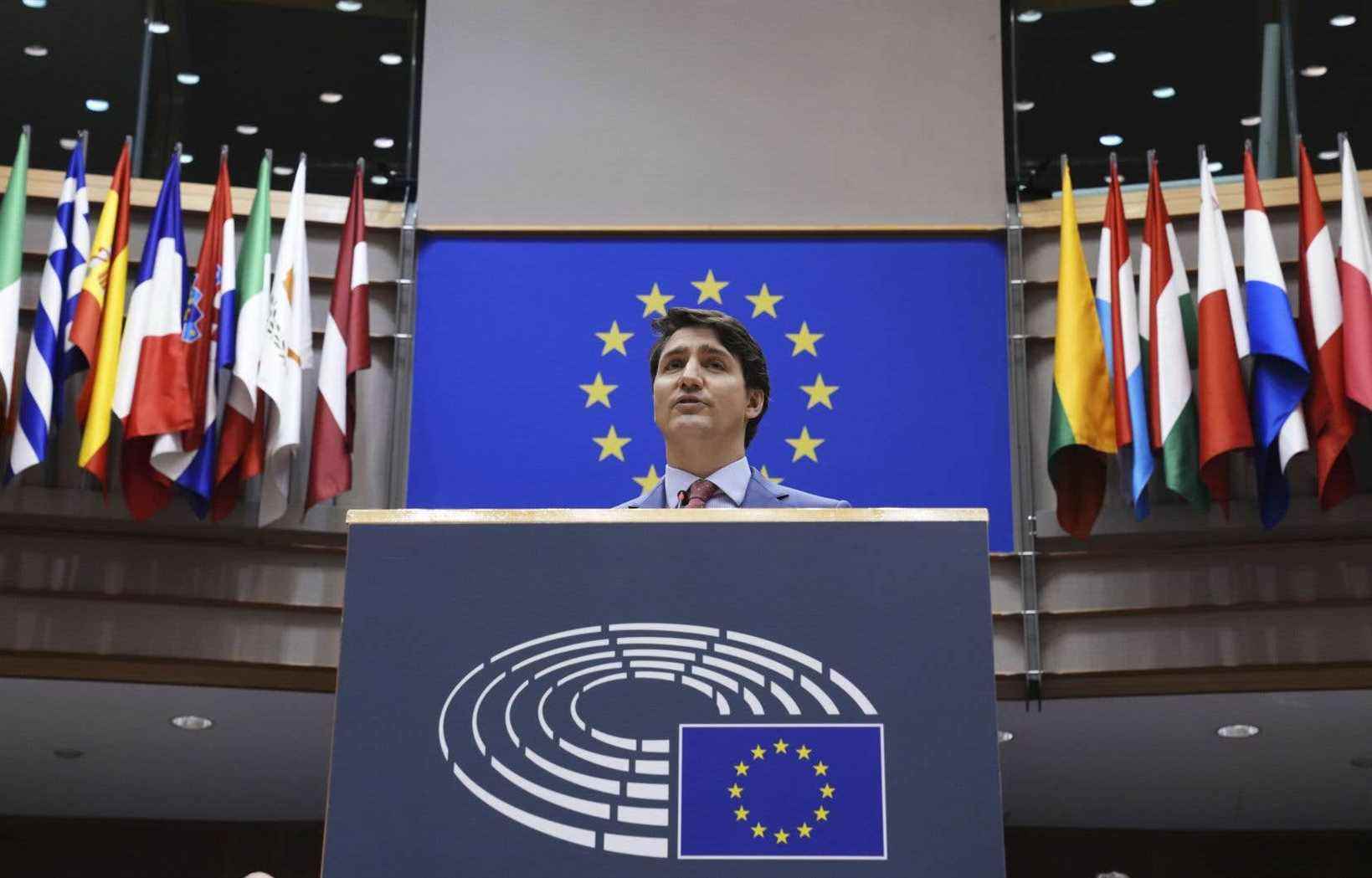Prime Minister Justin Trudeau and other Western leaders are meeting in Brussels on Thursday to coordinate NATO’s response to the Russian attack in Ukraine. A good opportunity to recall all that has gone wrong since well before this conflict with defense policy, military budgets and the army of Canada.
As soon as the new European war began, Canada sent the Ukrainian army a few tons of ammunition, 7,500 grenades and about 4,500 M72 rocket launchers designed in the 1960s. Ottawa also promised to deploy 460 more soldiers to Europe, who would be added to the 915 already on the ground, including 540 in Latvia. A second warship and an artillery battery have just left the country bound for the Old Continent. A reserve of 3400 Canadian soldiers is ready in case.
The material effort compares (quantitatively) to that of Denmark and the Netherlands, other members of the North Atlantic Treaty Organization (NATO). Only, with its meager efforts alone, Canada is already reaching its logistical limits, and this lack of leeway says a lot, a lot about the state of the national defense of the second largest country in the world.
“We should have had new fighter planes for 15 years and our frigates need to be changed,” says Rémi Landry, associate professor at the School of Applied Politics at the University of Sherbrooke and retired lieutenant-colonel. Canada is seen as a free-rider among allies, and has been for a long time. So it doesn’t surprise me that the Americans didn’t even ask us to contribute to their new anti-China forces in the Pacific. We don’t have what it takes to follow. »
Ottawa’s military spending will total $25 billion this year, or about 1.4% of GDP, far from the 2% required of NATO members. The United States, a global megabarrack, devotes 4% of its GDP to the sector and spends the annual equivalent of its northern neighbor in ten days.
Forward, march!
We already measure the ringing and stumbling effects of the invasion of Ukraine, the return of the cold war, even the beginning of a third world war (as the Ukrainian president, Volodymyr Zelensky says). Germany has announced substantial increases in its defense budgets. Canada could therefore follow suit. Justin Trudeau is expected to promise NATO allies in Brussels on Thursday to increase national military budgets and capabilities in the coming years.
Only, to do what and how? “We have to buy new frigates, new fighter planes, hire and train soldiers, but without a strategic framework, without clear objectives of what we want to defend,” says Justin Massie, full professor of political science at UQAM. and co-director of the Strategic Analysis Network.
“We have a defense policy [Protection, sécurité, engagement, 2017], which says the goal is to defend Canada, which seems vague to me and says nothing about threats, says the professor. And then, we have no foreign policy. Our governments have the annoying habit of not wanting to define our interests, preferring a so-called diplomacy of principles which sets out fundamental values [comme l’égalité hommes-femmes]. »
We have to go back to the time of Brian Mulroney and Pierre Elliott Trudeau, that is before the end of the Cold War, to find here a clear and substantial framework for action. “Since 2001 and the rise of China, we should have given birth to greater reflection on foreign affairs to define what we must defend, in relation to what threats and what risks,” continues Mr. Massie. In addition, the war unleashed last month in Ukraine seems to be the culmination of an aggression that began in 2014 with the annexation of Crimea by Russia, or even in 2008 with the capture of Georgia.
All risk insurance
So is the hard core of the former USSR once again becoming Canada’s main enemy, as between 1945 and 1991? The problem is becoming more complex, since health, economic or climatic crises are superimposed on military issues. A symposium on the country’s strategic orientations (“Security issues, diplomatic issues”), held online on Wednesday morning, enabled experts to propose different responses:
Anomie. A serious political crisis seems to be emerging in the Western world, and the recent occupation of Ottawa would be a worrying sign of the arrival in Canada of an extremist current stimulated by the pandemic crisis. In the country, one person in ten fully defends conspiracy theories, and up to two out of ten espouse them in part. “We are vulnerable because we find it difficult to recognize that democratic societies are much more fragile than we think,” indicated Professor David Morin of the Université de Sherbrooke.
The Arctic. The vast territory constantly comes up in strategic discussions. Several participants in Wednesday’s symposium agree in concluding that we must review Canada’s participation in NORAD (the North American Aerospace Defense Command), and build new radars to monitor the threat of hypersonic missiles while patrolling and securing the huge territory with drones and icebreakers.
Climate changes. The great upheavals will get worse and will end up turning entire continents upside down, among other things by creating tens of millions of refugees. Camille Raymond, a student at UQAM, pointed out that the Forces should also take into account the ecological footprint of their equipment to be replaced.
Lack of manpower. Canada will have to face manpower problems as its army, impoverished and dried up, finds itself increasingly called upon everywhere for all sorts of non-military tasks. The Canadian army has only 22,500 full-time members and almost as many reservists. Approximately 12,000 positions remain to be filled. The pandemic has had an impact on recruiting and training.
On the other hand, there is no shortage of generals, according to former lieutenant-colonel Rémi Landry. The official site of the Forces lists ten of them. “We don’t have the 68,000 men we should have. But we have generals for an army of about 150,000 men. We should perhaps invest more in providing services,” he says, suggesting an analogy with health bureaucracy, deemed to be sclerosing…
